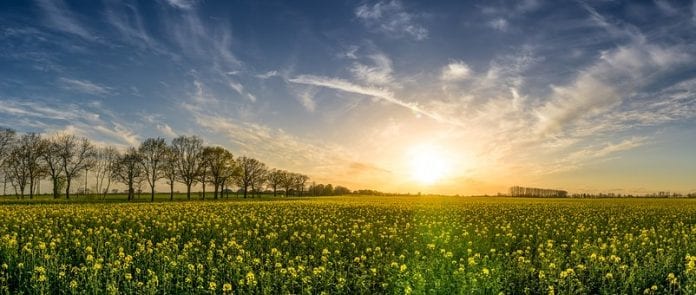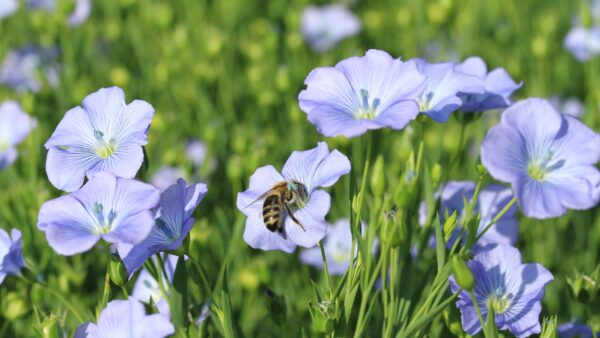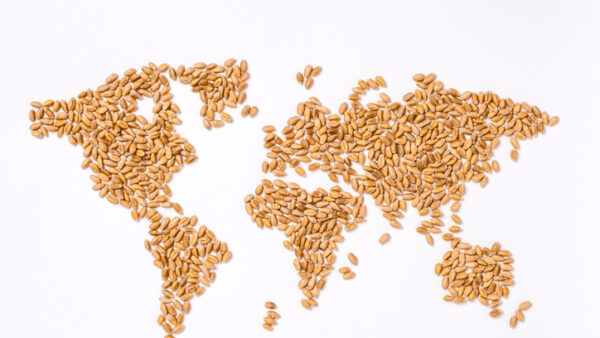Policy making is equal to making choices among goals and interests and often between short and long term intended impact. The more complex a policy area, the more knowledge is needed to make wise decisions.
Agriculture is a typical area that is inherently complex, notably because different policy objectives have an impact on agricultural practice and because biology is by definition less straightforward than physics. One of my own hobbyhorses has been the inability to arrive at sensible policies at the global level where conservation and innovation objectives have to be combined in nature, agricultural and industrial policies, and where rights-based approaches (private in WIPO/UPOV, national sovereign in CBD, and farmers rights in ITPGRFA and more) only blur the debate.
Also at the more practical level, agriculture is a headache for policy makers. Agriculture itself is much more complex than any manufacturing sector — it produces essential products for human life in a very diverse way, using a lot of space, impacting the environment and is embedded in a variety of world views both among producers and consumers. Europe has long attempted to simplify things. The Mansholt doctrine had a singular goal: food security for the continent. It (over-)reached its goal leading to meat mountains and milk lakes, and at the same time had significant environmental setbacks. Currently, agriculture is set against environmental, nature restoration and many other goals which makes policy making and regulation a tedious task. Recognizing the biological, ecological, commercial and (geo)political complexities of agriculture requires deep knowledge not only of these individual areas, but especially of the interactions between them. Governments are struggling with identifying the — often unintended — impact of particular measures on these other fields. The easiest way is to simply ignore the complexities. The most obvious example is the current rules based on ‘calendar agriculture’, measures that The Netherlands reported to Brussels to implement various EU goals.
The objective to cover the soil during winter is a commendable objective to conserve and improve soil quality and support biodiversity in intensive cropping systems. The cultivation of cover crops during winter is a commendable tool to avoid nitrate leaching, especially when such crops fight soil borne pests and diseases, notably nematodes at the same time. Such catch crops have been identified and bred to establish in the fall and that are sufficiently cold-sensitive to avoid becoming a weed problem for the following summer crop.
There are two challenges: in order to give cover crops a sufficient “temperature sum” to establish in the fall a rule is introduced that summer crops need to be harvested before October 1, irrespective of the particular year. This means that when the spring in a particular year is cool, crops like potato and maize have insufficient time to produce a good yield and quality. Similarly, for the same reason of soil improvement and biodiversity, under the Dutch regulations of the Common Agricultural Policy, the soil has to be covered for 80 per cent on March 1 in order to be eligible for support. This means that cover crops need to be less cold sensitive, and that other means need to be applied to get rid of them in spring, either with soil-biodiversity damaging and CO2-emitting heavy ploughing, or by herbicides. Oops, that was exactly NOT the expected outcome of the soil improvement strategy. These are simple examples how administrative measures, in short ‘calendar agriculture’, may be less straightforward than it looks at first glance.
More specifically for seeds there are some important examples in the current EU-debates as well: IPM and VSCU. In the debates about reducing environmental impact of crop protection, the concept of Integrated Pest Management (IPM) is leading, which makes sense to a large extent. Spraying only when an economic threshold of damage is reached is a sensible way of achieving those goals in many applications. However, we have two challenges in these discussions that are easy to understand but apparently difficult to translate into policies: the use of healthy seeds and planting materials is the logical basis for any crop protection strategy. However, when such guarantees can not be given because the concept IPM is implemented religiously, then farmers may plant an inoculum of certain diseases, and since phytosanitary rules for export often apply zero-tolerances, we can forget the contribution of Europe towards sustainable agriculture elsewhere through the export of quality seeds. IPM is fine but needs to be applied wisely in seed production fields. The other challenge is seed treatment. Obviously, this is the most effective use of very small qualities of (chemical) crop protection, which should be recognized as contributing to IPM as it avoids rather than controls diseases in crop production. However, for some using the strictest definition of IPM, where crop protection is only allowed as a last resort beyond the threshold, the treatment of seed with chemicals or biologicals before any pest appears does not fit. In order not to throw away the baby with the bath water, the seed treatments should be supported as a preventive measure under IPM rather than blocked.
I agree, policy making in agriculture is inherently complex. This means that national ministries and EU-Commission should invest in having sufficient knowledge themselves. That should lead to them being less vulnerable to lobby groups. Of course, these groups have their value, but they become partners by supplying knowledge and insights by knowledgeable public bodies that can understand and weigh their input.
Another one is the wish in PRM to allow new varieties onto the market only when they have a special sustainability advantage, while on the other hand to stimulate conservation varieties much more liberally than before. Putting the two gals in one sentence already illustrates the complexity. Old varieties may be useful for particular culinary and biodiversity conservation reasons, but they are not necessarily the top varieties in terms of many sustainability parameters. New varieties having new characteristics but not a visible sustainability advantage may contribute to genetic diversity but will not be allowed onto the market according to the current plans.
So, either such dilemmas are inherent to the complexity of agriculture, with a kind of ‘shit happens’ approach, or governments should invest much more in acquiring practical agricultural experience in their ranks, or a combination of both. Those who know agriculture should be allowed or — better — invited to share their knowledge with policy makers more effectively. The political cultures that make this possible differ quite a bit among the EU member states. Even in countries that are proud of their multi-stakeholder approaches to informing policy processes, dilemmas are difficult to avoid.
Further, governments have to be able to communicate their policies, and the dilemmas they have to deal with. An interesting case in point is currently the issue around new genomic techniques. There are many components in the Commission proposal that need to be explained. Let me pick just one: the prohibition of the organic sector to use NGTs, including the ‘nature-like’ category one products that could also be created in nature or through conventional breeding methods. The logic of (the vocal part of) the organic sector is that they demand to be freed from GMOs and that policies should make it possible for them to maintain that claim. However, the organic sector has been using products of genetic modification – the products of random mutagenesis — throughout the existence of the term ‘organic’. I have not heard the Commission explaining how they dealt with the dilemma they must have had which led to allowing the organic sector to use the older category of ‘nature-like’ GMOs and not the newer ones.












